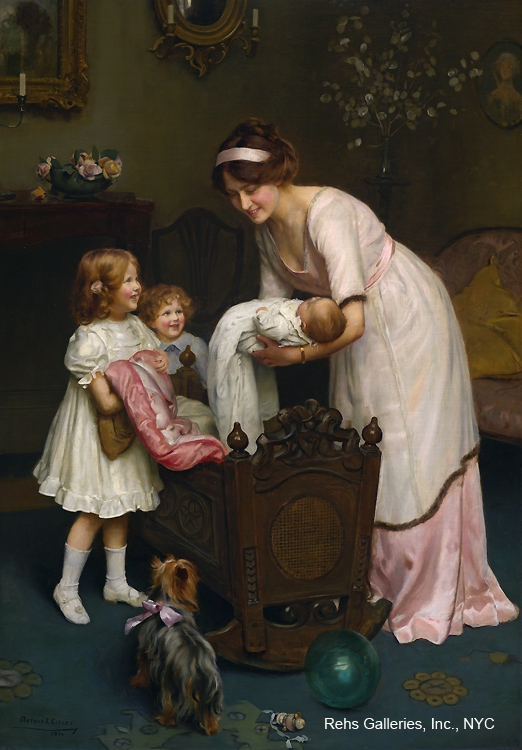|
Good Night
ARTHUR J. ELSLEY
(1860 - 1952)
Good Night
Oil on canvas
43 x 30 inches
Signed and dated 1914
Provenance:
Cooling Galleries, London
Private collection
Schillay & Rehs, Inc., New York City, Dec. 3, 1980
Private collection, New York, Dec. 30, 1980
Rehs Galleries, Inc., New York City, 2011
Private collection, 2011 Exhibited:
Royal Academy, London, 1914, No. 377
During the middle of the nineteenth century, genre paintings with domestic life subjects became popular in England. The new affluent middle class favored in particular genre paintings that depicted scenes of children with their pets in playful settings. Arthur John Elsley was one of the most popular English artists who depicted such childhood scenes in the late Victorian and Edwardian periods. His works were so popular during his lifetime that many of his paintings were reproduced as prints, and were often used in calendars, advertisements, books and magazines.
Arthur John Elsley was born on November 20, 1860 in London, England. He was one of six children born to John Elsley and Emily née Freer. His father was a coachman, and an amateur artist, who had exhibited a painting, entitled A Group of Horses at the British Institution Exhibition in 1845. However, around 1872 John Elsley was afflicted with fibroid phthisis, which forced him to retire as a coachman and take the position of resident caretaker for a firm of stockbrokers in London.
The earliest surviving drawing of Arthur Elsley was made when he was eleven years old. It was a pencil sketch of a cairn terrier named Vic. Other works included pencil sketches of a chimpanzee, a giraffe, and an arctic wolf, which he made when he visited the Zoological Gardens in Regents Park in 1874. By the time he was fourteen years old, Elsley enrolled in South Kensington School of Art which later became the Royal College of Art. It was also around that time that he contracted measles, which caused permanent damage to his eyesight. (Terry Parker, Golden Hours, The Paintings of Arthur J. Elsley, 1860-1952, p. 7)
In 1876, Elsley became a probationer at the Royal Academy Schools, where he studied there under Frederick Pickersgill (1820-1900, Keeper of the Royal Academy between 1873 and 1887), Edward Armitage (1817-1896, Professor of Painting 1875-1882), John Marshal (d.1896, Professor of Anatomy 1873-1890), and Henry Bowler (1824-1903, Professor of Perspective between 1861 and 1899). An avid cyclist, Elsley used to take off to the countryside on his bicycle to get inspiration for his compositions. His first Royal Academy exhibit in 1878 entitled A Portrait of An Old Pony was the only one his father would see, as he died one month later.
Elsley continued to study at the Academy Schools until 1881-1882. He then began to earn his living from portrait commissions of children, horses, and dogs. During that time, he exhibited mostly domestic equestrian paintings. In addition, he painted numerous family and canine portraits for the Benett-Stanford family, who lived at Preston Manor. Many of these works are still exhibited at the Manor, which is open to the public. By the age of twenty-four, his first published known work was printed in a boy’s magazine (Young England in 1885, No. 43, April, 1885). This work was a line engraving entitled April Floods In Eastern Counties.
Elsley was well acquainted with other British artists such as Solomon Joseph Solomon (1860-1927) and George Grenville Manton (1855-1932), with whom he began sharing a studio in 1876. Manton introduced Elsley to Frederick Morgan (1847-1927), the popular genre painter who specialized in children scenes. When Manton left the studio in 1889, Elsley moved into Morgan’s studio, which turned out to be mutually beneficial. Morgan was already an established artist, but could not paint animals, and had collaborated in the past with a specialist in canine portraits, a role that would now be taken over by Elsley.
In 1891, Elsley won a silver medal in the Crystal Palace exhibition for his painting entitled The Bailiff’s (sic) Daughter of Islington. The following year, his painting entitled I’se Biggest (1892) was reproduced as a print, and it became so popular it had to be re-engraved. That scene of a little girl measuring her height against a St. Bernard dog was described as “one of those simple and unaffected pictures which readily lend themselves to reproduction and has so much nature and so admirable a touch of humor in it that no doubt a great numbers of those who admire it at Burlington House will be delighted to have an opportunity of hanging a version of it upon their walls,” (Parker, p. 20). Also in 1892, The Illustrated London News, the popular weekly magazine chose one of Elsley’s paintings, Grandfather’s Pet (1892), as their 1893 Christmas print.
The success which Elsley began to enjoy enabled him to have the financial means to marry his second cousin Emily (Emm) Fusedale on 11 November, 1893. She was ten years his junior, and had modeled for him for ten years. They would have one child, Marjorie who was born in 1903, and who would become the model for many of his successful paintings. After his marriage, Elsley moved to his own studio, but “the interplay of ideas and compositions with the use of the same models,” showed a continued cooperation with Morgan. (Parker, p. 9)
In 1894, when the well known artist Charles Burton Barber (1845-1894) died, Elsley succeeded him as the foremost exponent of paintings depicting children and pets. The Illustrated London News, 25 January 1896, (p.120) wrote:
“Mr. Elsley appears more distinctly as a follower, though not an imitator, of Mr. Burton Barber, differing from him by allowing his children more than a pet at a time, and going beyond the limitations of a fox-terrier, or a collie. He has a keen sense of humor, especially in his treatment of puppies’ backs, which, as students of dog-life well know, are their most expressive features.” (Parker, p. 10)
Around the turn of the century, Elsley and Morgan became permanently estranged when Morgan accused him of stealing one of his ideas. (Parker, p. 11) Elsley started to produce more “adventurous, multi-figured works on a grander scale.” (Parker, p.11) All his compositions and paintings were produced in his studio, where his child and canine models sat individually. Even the outdoors elements were incorporated from oil sketches of landscapes, which he made for pleasure, photographs, or from images of countryside panoramas in Country Life magazine. It was reported that this method of working in his studio may have accounted for “some of Elsley’s problems with perspective, not helped by his short-sightedness which sometimes caused him to use opera glasses in order to see his models!” (Parker, p. 11)
The First World War affected Elsley’s productivity. During that period, he worked part-time at a munitions factory, where he “filed the jigs used to test gun-sights in the making.” (Parker, p.11) As the work put additional strain on his eyes, he only painted four works from 1915 to 1917. Three were commercial works, and one was a portrait of his daughter Marjorie, which was not for sale but was still exhibited at the Royal Academy. In the years that followed, he continued to paint mostly for pleasure and exhibited some of his works until 1927. However, his eyesight continued to fail, and by 1931 it became so poor that he confined his activities to woodwork, metalwork and gardening. Arthur John Elsley died at his home on 19 February 1952, at the age of 91.
During his career, Arthur Elsley exhibited 52 works at the Royal Academy from 1878 until 1927, and many more at other major exhibition halls throughout England. These included: The Royal Society of British Artists, London; The Walker Art Gallery, Liverpool; The Institute of Painters in Oil Colors, London; French Gallery, London; Dudley Gallery, London; The Institute of Fine Art, Glasgow; Manchester City Art Gallery; The Royal Society of Artists, Birmingham; Nottingham, Castle Museum; Victoria Gallery, Bath; The Crystal Palace, London; Cork International Exhibition. Some examples of the commercial use of Elsley’s prints include: color calendars published by the American firm Thomas D. Murphy Co.; advertisement for Sunlight Soap; advertising show-cards for Old Calabar Dog & Puppy Biscuits, Brooks Sewing Cotton, and Peek, Frean & Co., Biscuits & Cakes; cover for the publication of Bibby’s Quarterly.
His works can be seen in several museums including the Russell-Cotes Art Gallery and Museum, East Cliff, Bournemouth; Hartlepool Museum Services, Sir William Grey House, Clarence Road, Hartlepool; Lady Lever Art Gallery, Port Sunlight, Liverpool; The Royal Liverpool Children’s Hospital, Alderhey, Eaton Road, Liverpool; Royal Pavilion Art Gallery and Museum, Brighton; Preston Manor, 194 Preston Road, Brighton. |
|
|
INDEX - A VISUAL HISTORY
>
<
|
|
Virtual Exhibition Index
|
next
prev
|
 AIRY, ANNA (1882 - 1964)The Little Mirror AIRY, ANNA (1882 - 1964)The Little Mirror |
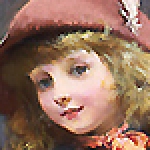 BARBER, CHARLES BURTON (1845 - 1894)Off to School BARBER, CHARLES BURTON (1845 - 1894)Off to School |
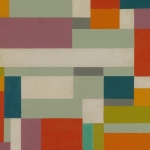 BOLOTOWSKY, ILYA (1907 - 1981)Abstract BOLOTOWSKY, ILYA (1907 - 1981)Abstract |
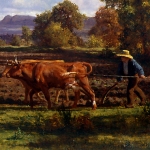 BONHEUR, AUGUSTE (1824 - 1884)Ploughing in the Nivernais BONHEUR, AUGUSTE (1824 - 1884)Ploughing in the Nivernais |
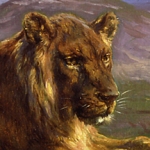 BONHEUR, ROSA (1822 - 1899)Couching Lion BONHEUR, ROSA (1822 - 1899)Couching Lion |
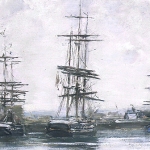 BOUDIN, EUGENE LOUIS (1824 - 1898)La bassin, Deauville BOUDIN, EUGENE LOUIS (1824 - 1898)La bassin, Deauville |
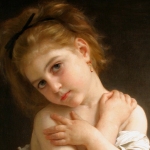 BOUGUEREAU, WILLIAM A. (1825 - 1905)La Frileuse BOUGUEREAU, WILLIAM A. (1825 - 1905)La Frileuse |
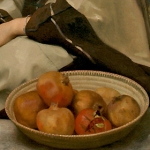 BOUGUEREAU, WILLIAM A. (1825 - 1905)Marchande de grenades (Pomegranate Seller) BOUGUEREAU, WILLIAM A. (1825 - 1905)Marchande de grenades (Pomegranate Seller) |
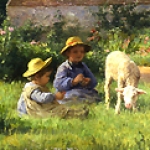 CHAIGNEAU, JEAN F. (1830 - 1906)Le Jardin de l'Artiste CHAIGNEAU, JEAN F. (1830 - 1906)Le Jardin de l'Artiste |
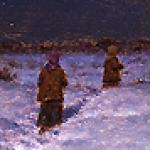 CHOULTSE, IVAN F. (b.1877)Nuit de Mars, Russie CHOULTSE, IVAN F. (b.1877)Nuit de Mars, Russie |
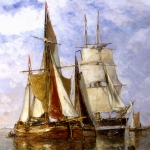 CLAYS, PAUL JEAN (1819 - 1900)Shipping on the Scheldt CLAYS, PAUL JEAN (1819 - 1900)Shipping on the Scheldt |
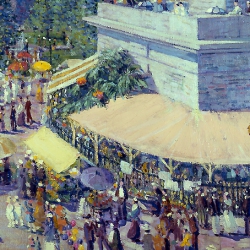 COALE, GRIFFITH BAILEY (1890 - 1950)The Baltimore Flower Mart - 1915 COALE, GRIFFITH BAILEY (1890 - 1950)The Baltimore Flower Mart - 1915 |
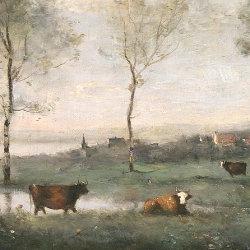 COROT, JEAN-BAPTISTE-CAMILLE (1796 - 1875)Pâturage dans les marais (Souvenir des environs d'Amiens) COROT, JEAN-BAPTISTE-CAMILLE (1796 - 1875)Pâturage dans les marais (Souvenir des environs d'Amiens) |
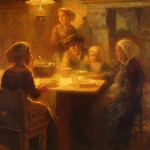 CORTÈS, EDOUARD LEON (1882 - 1969)The Breton Family CORTÈS, EDOUARD LEON (1882 - 1969)The Breton Family |
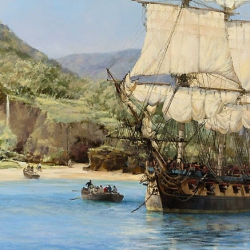 DAWSON, MONTAGUE (1895 - 1973)The Pirate's Cove, Wafer Bay, Cocos Island DAWSON, MONTAGUE (1895 - 1973)The Pirate's Cove, Wafer Bay, Cocos Island |
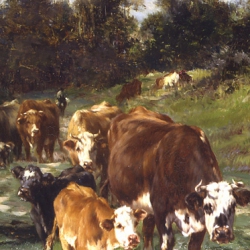 DIÉTERLE, MARIE (1856 - 1935)Troupeau dans un chemin creux DIÉTERLE, MARIE (1856 - 1935)Troupeau dans un chemin creux |
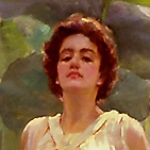 DRUMMOND, ARTHUR (1871 - 1951)Victorian Fantasy DRUMMOND, ARTHUR (1871 - 1951)Victorian Fantasy |
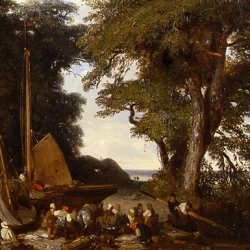 DUPRÉ, JULES (1811 - 1889)Environs de Plymouth DUPRÉ, JULES (1811 - 1889)Environs de Plymouth |
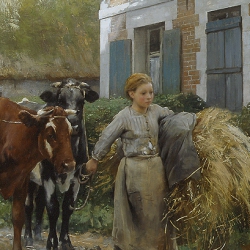 DUPRÉ, JULIEN (1851 - 1910)La rentrée au village DUPRÉ, JULIEN (1851 - 1910)La rentrée au village |
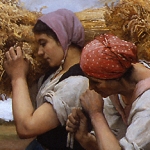 DUPRE, JULIEN (1851 - 1910)Glaneuses DUPRE, JULIEN (1851 - 1910)Glaneuses |
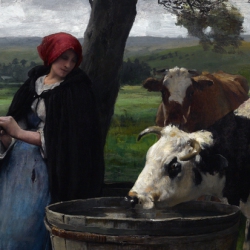 DUPRE, JULIEN (1851 - 1910)La Prairie DUPRE, JULIEN (1851 - 1910)La Prairie |
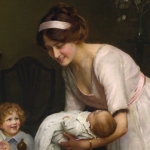 ELSLEY, ARTHUR J. (1860 - 1952)Good Night ELSLEY, ARTHUR J. (1860 - 1952)Good Night |
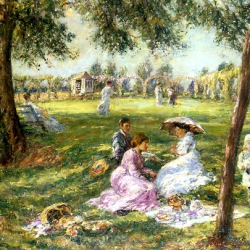 FISHER, R.A., WILLIAM MARK (1841-1923)In the Garden FISHER, R.A., WILLIAM MARK (1841-1923)In the Garden |
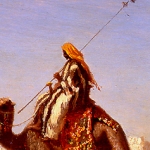 FRERE, CHARLES THEODORE (1814 - 1888)A Caravan Crossing the Desert FRERE, CHARLES THEODORE (1814 - 1888)A Caravan Crossing the Desert |
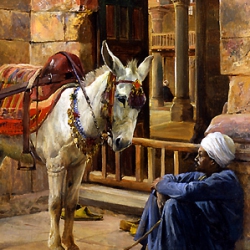 GIRARDET, EUGENE ALEXIS (1853 - 1907)Outside the Mosque GIRARDET, EUGENE ALEXIS (1853 - 1907)Outside the Mosque |
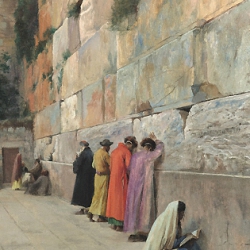 GIRARDET, EUGENE ALEXIS (1853 - 1907)The Wailing Wall GIRARDET, EUGENE ALEXIS (1853 - 1907)The Wailing Wall |
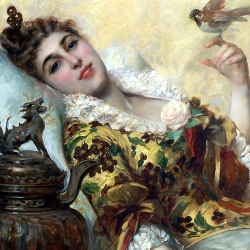 HERBO, LEON (1850 - 1907)La Charmeuse HERBO, LEON (1850 - 1907)La Charmeuse |
 ISRAELS, ISAAC (1865 - 1934)Dancing at the Moulin de la Galette ISRAELS, ISAAC (1865 - 1934)Dancing at the Moulin de la Galette |
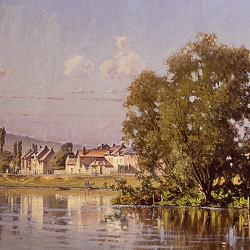 JOUBERT, LEON (fl.1883 - 1900)Un Coin de Seine a Lavacourt JOUBERT, LEON (fl.1883 - 1900)Un Coin de Seine a Lavacourt |
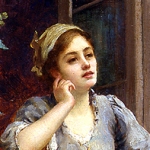 KNIGHT, DANIEL RIDGWAY (1839 - 1924)A Pensive Moment KNIGHT, DANIEL RIDGWAY (1839 - 1924)A Pensive Moment |
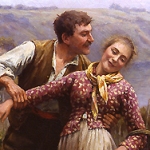 KNIGHT, DANIEL RIDGWAY (1839 - 1924)En Vendanges KNIGHT, DANIEL RIDGWAY (1839 - 1924)En Vendanges |
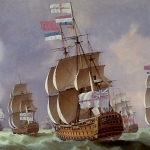 LUNY, THOMAS (1759 - 1837)Engagement Between Sir George Brydges Rodney and the Spanish Squadron, Commanded by Don Juan de Langara, Near Cape St. Vincent, January 16, 1780 LUNY, THOMAS (1759 - 1837)Engagement Between Sir George Brydges Rodney and the Spanish Squadron, Commanded by Don Juan de Langara, Near Cape St. Vincent, January 16, 1780 |
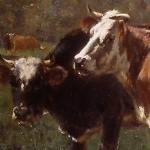 MARCKE DE LUMMEN, EMILE VAN (1827 - 1890)Vaches a Pâture MARCKE DE LUMMEN, EMILE VAN (1827 - 1890)Vaches a Pâture |
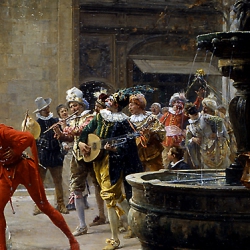 MOREAU, ADRIEN (1843-1906)Une Mascarade au XVII Siecle MOREAU, ADRIEN (1843-1906)Une Mascarade au XVII Siecle |
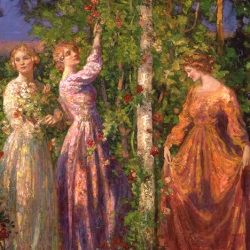 MOSTYN, TOM (1864 - 1930)Gather Ye Rosebuds While Ye May MOSTYN, TOM (1864 - 1930)Gather Ye Rosebuds While Ye May |
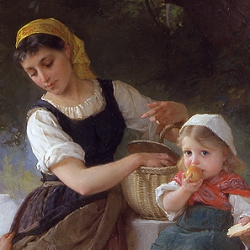 MUNIER, EMILE (1840 - 1895)May I Have One Too MUNIER, EMILE (1840 - 1895)May I Have One Too |
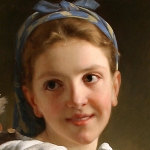 MUNIER, EMILE (1840 - 1895)La retour du marché MUNIER, EMILE (1840 - 1895)La retour du marché |
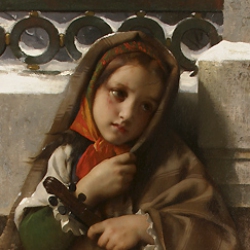 PERRAULT, LEON J.B. (1832 - 1908)Away From Home PERRAULT, LEON J.B. (1832 - 1908)Away From Home |
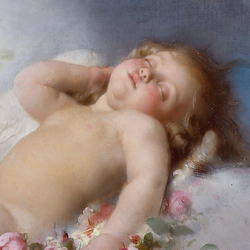 PERRAULT, LEON J.B. (1832 - 1908)Sleeping Putto PERRAULT, LEON J.B. (1832 - 1908)Sleeping Putto |
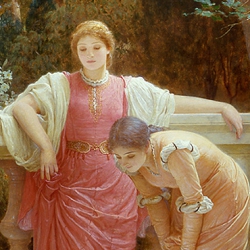 PERUGINI
, CHARLES EDWARD (1839-1918)The Green Lizard PERUGINI
, CHARLES EDWARD (1839-1918)The Green Lizard |
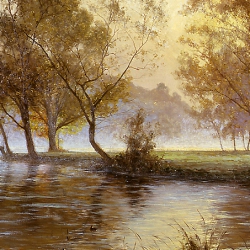 RIGOLOT, ALBERT GABRIEL (1862 - 1932)Soleil Levant dans la Brume RIGOLOT, ALBERT GABRIEL (1862 - 1932)Soleil Levant dans la Brume |
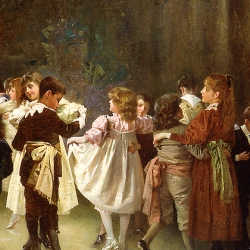 ROSSI, ALEXANDER MARK (FL.1870 - 1903)
May I Have This Dance? ROSSI, ALEXANDER MARK (FL.1870 - 1903)
May I Have This Dance? |
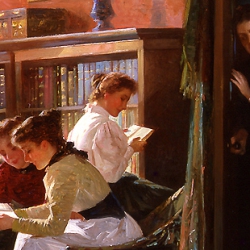 ROSSI, ALEXANDER MARK (FL.1870 - 1903)Forbidden Books ROSSI, ALEXANDER MARK (FL.1870 - 1903)Forbidden Books |
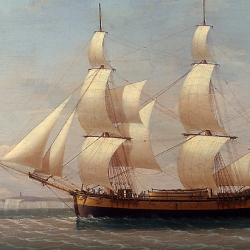 SALMON, ROBERT (1775 - c.1845)
The Estridge off Dover SALMON, ROBERT (1775 - c.1845)
The Estridge off Dover |
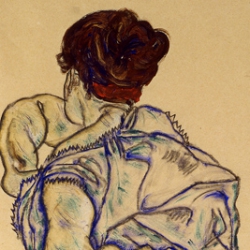 SCHIELE, EGON (1890 - 1918)Semi-nude with Green Stockings from the Back SCHIELE, EGON (1890 - 1918)Semi-nude with Green Stockings from the Back |
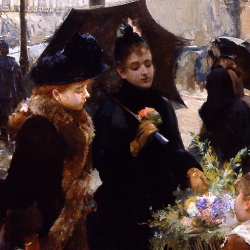 SCHRYVER, LOUIS MARIE DE (1862 - 1942)Après l’averse; - place du Théâtre-Français SCHRYVER, LOUIS MARIE DE (1862 - 1942)Après l’averse; - place du Théâtre-Français |
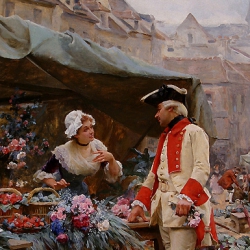 SCHRYVER, LOUIS MARIE DE (1862 - 1942)A Young Man's Fancy SCHRYVER, LOUIS MARIE DE (1862 - 1942)A Young Man's Fancy |
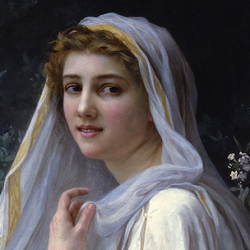 SEIGNAC, GUILLAUME (1870 - 1924)Reflections SEIGNAC, GUILLAUME (1870 - 1924)Reflections |
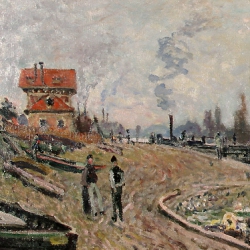 SISLEY, ALFRED (1839 - 1899)La Seine à Suresnes SISLEY, ALFRED (1839 - 1899)La Seine à Suresnes |
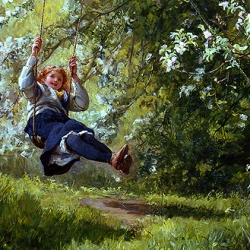 TOPHAM, FRANCIS W.W. (1838 - 1924)Young Girl on a Swing TOPHAM, FRANCIS W.W. (1838 - 1924)Young Girl on a Swing |
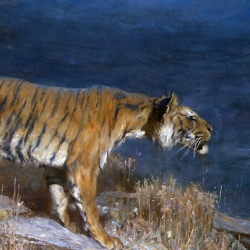 WARDLE, ARTHUR (1864 – 1949)The Deer-Stealer WARDLE, ARTHUR (1864 – 1949)The Deer-Stealer |
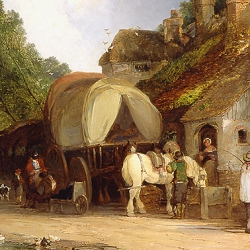 WILLIAMS, EDWARD CHARLES (1807 - 1881)The Old Roadside Inn WILLIAMS, EDWARD CHARLES (1807 - 1881)The Old Roadside Inn |
|
|
